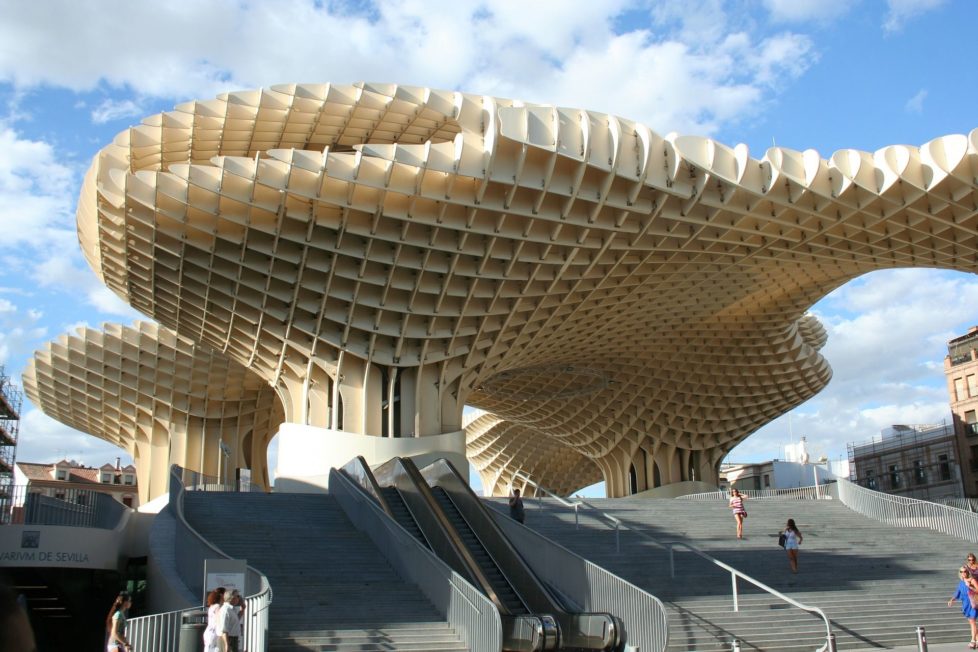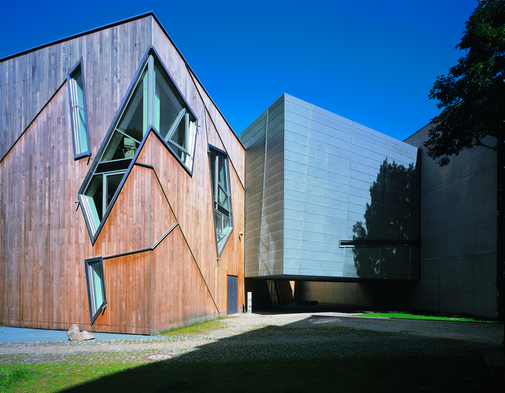Origami, the ancient Japanese art of paper folding, has not only captivated the world with its intricate paper sculptures but has also left a lasting influence on the field of architecture. The principles of origami, such as geometric precision, modularity, and efficient use of materials, have inspired architects worldwide to create innovative and awe-inspiring structures. In this article, we will explore how origami has influenced architecture across the globe, highlighting specific examples of buildings that bear the unmistakable imprint of this paper-folding art.
- Water Cube, Beijing, China:
One of the most iconic structures from the 2008 Beijing Olympics, the Water Cube, or the National Aquatics Center, draws inspiration from the concept of “water molecules in a state of flux.” The building’s facade is a stunning example of biomimicry and origami-inspired design, featuring a translucent ETFE (ethylene tetrafluoroethylene) bubble structure reminiscent of soap bubbles. The bubble-like cells create an energy-efficient building envelope, allowing natural light to penetrate while maintaining optimal temperature and humidity levels inside. - Metropol Parasol, Seville, Spain:
Designed by the German architect Jürgen Mayer, the Metropol Parasol, also known as the “Mushrooms of Seville,” showcases a series of large timber parasols that resemble folded paper plates. The organic, fluid shapes of these wooden structures are a testament to the influence of origami in modern architecture. They provide shade, house an archaeological museum, and offer panoramic views of the city from elevated walkways.

- Origami House, Valencia, Spain:
Designed by the renowned architect Fran Silvestre, the Origami House lives up to its name. The house’s distinctive folding facade, made of white concrete, creates a visually striking effect, akin to folded paper. This residential masterpiece demonstrates how origami’s principles of folding and geometry can be applied to create unique and dynamic architectural forms. - Felix Nussbaum Haus, Osnabrück, Germany:
The Felix Nussbaum Haus, designed by architect Daniel Libeskind, pays homage to the Jewish artist Felix Nussbaum, who perished in the Holocaust. The building’s design draws inspiration from the idea of a torn and folded Star of David, with angular and intersecting forms that evoke folded paper. This architectural masterpiece serves as both an art museum and a poignant memorial.

- Paper Dome, Taomi Village, Taiwan:
While not a traditional architectural marvel, the Paper Dome is a shining example of how origami can inspire sustainable and disaster-resistant structures. This temporary church was constructed after the 1999 Chi-Chi earthquake using recycled paper and cardboard tubes. Its ingenious folding and dome-shaped design not only withstood the elements but also served as a symbol of hope and community resilience. - Louvre Abu Dhabi, Abu Dhabi, UAE:
Designed by Pritzker Prize-winning architect Jean Nouvel, the Louvre Abu Dhabi features a striking geometric patterned dome that appears to float above the museum. The “rain of light” effect created by the lattice-like dome is reminiscent of folded origami paper, and it allows natural light to filter through while maintaining a comfortable climate inside. The interplay of light and shadow further enhances the museum’s aesthetic appeal. - Serpentine Pavilion 2016, London, UK:
The 2016 Serpentine Pavilion, designed by Bjarke Ingels Group (BIG), showcased an impressive structure composed of extruded fiberglass boxes arranged in a complex geometric pattern. This temporary pavilion, inspired by the concept of an unzipped wall, demonstrates how origami’s principles of folding and unfolding can be translated into architectural form. It provided a captivating space for visitors to explore during the summer months.
In conclusion, origami’s influence on architecture is evident in the way architects worldwide have embraced its principles of precision, modularity, and efficient material use to create remarkable structures. From iconic Olympic venues to innovative residential designs, origami has transcended paper to shape the built environment. These examples highlight the enduring impact of this ancient Japanese art on contemporary architecture, inspiring architects to fold, shape, and mold the future of design.
